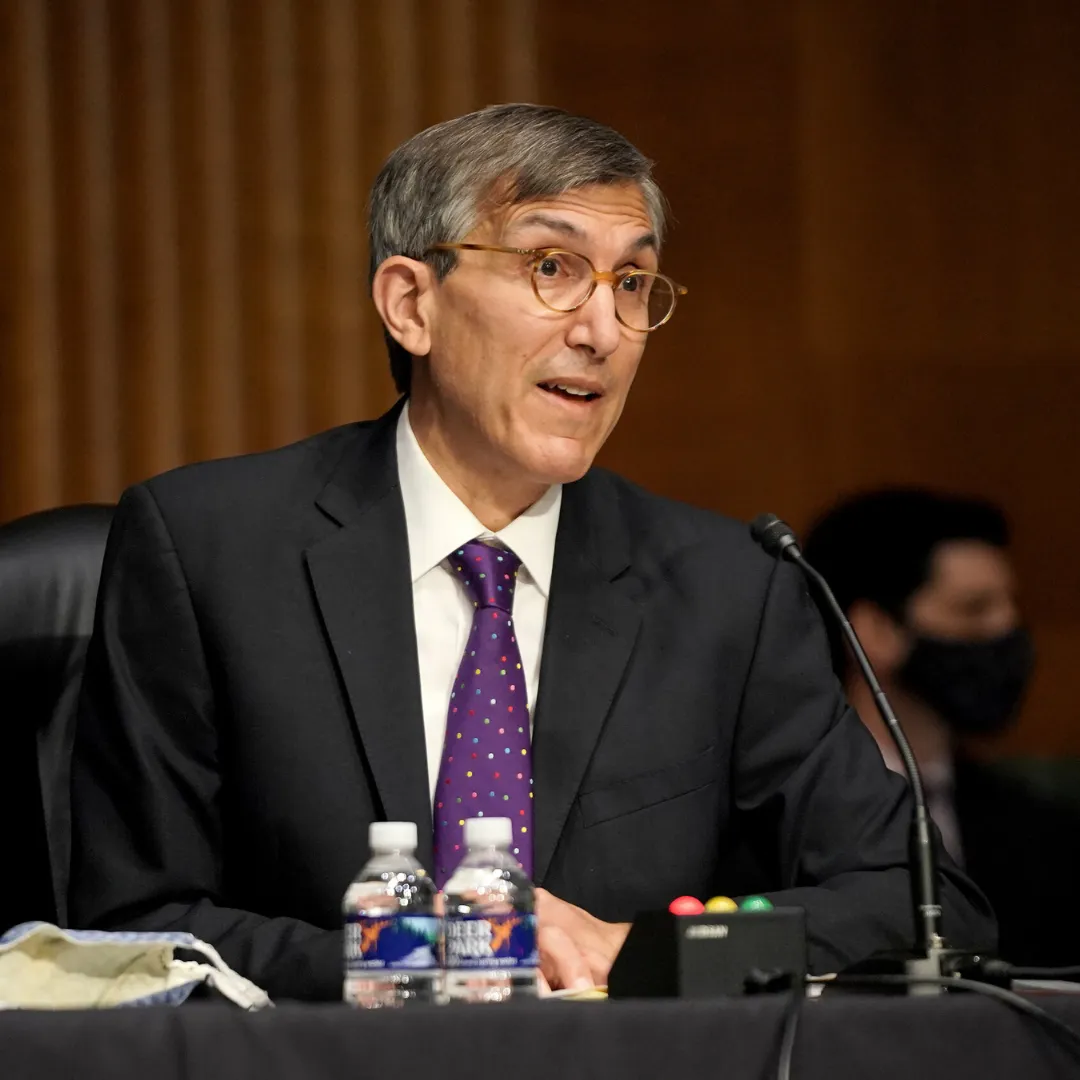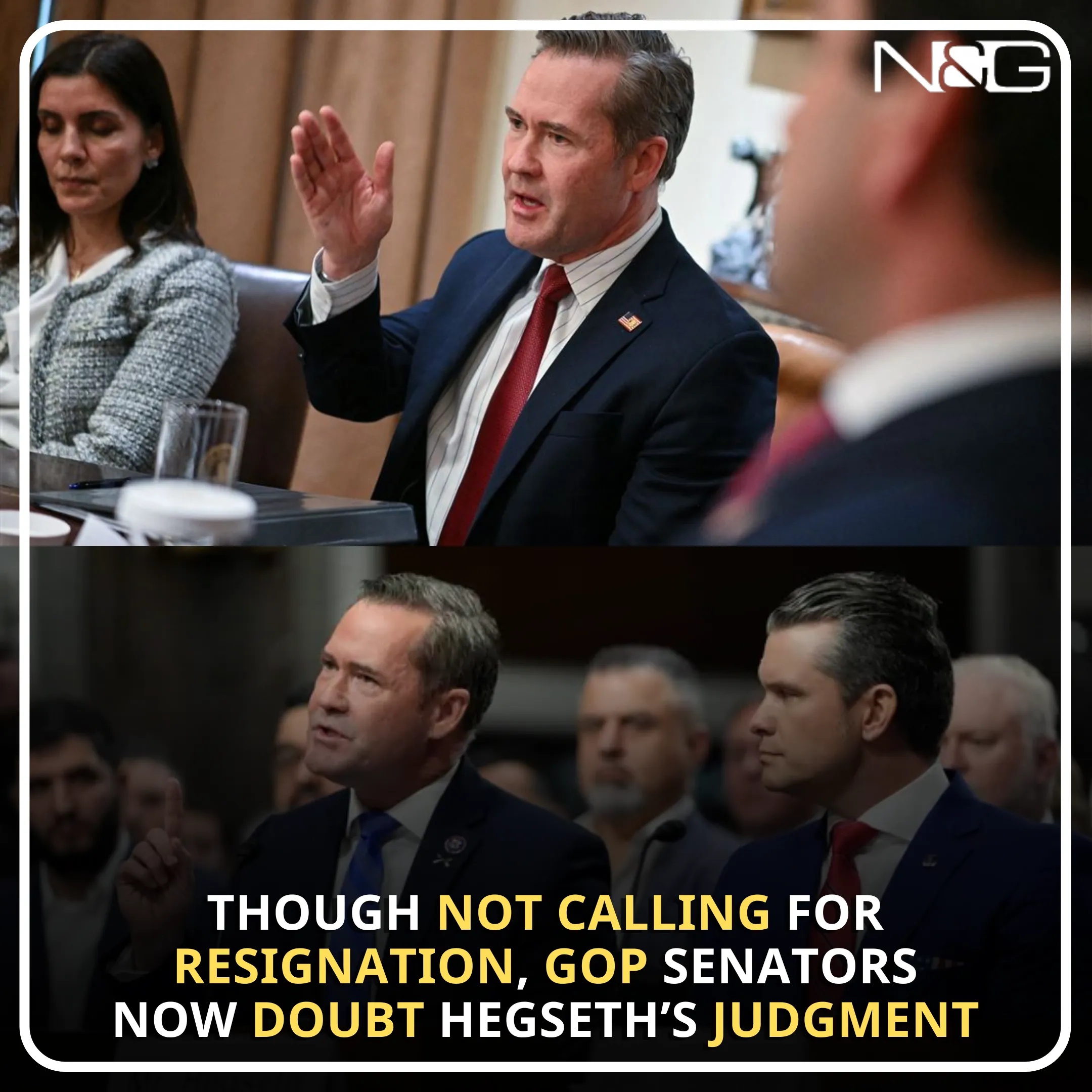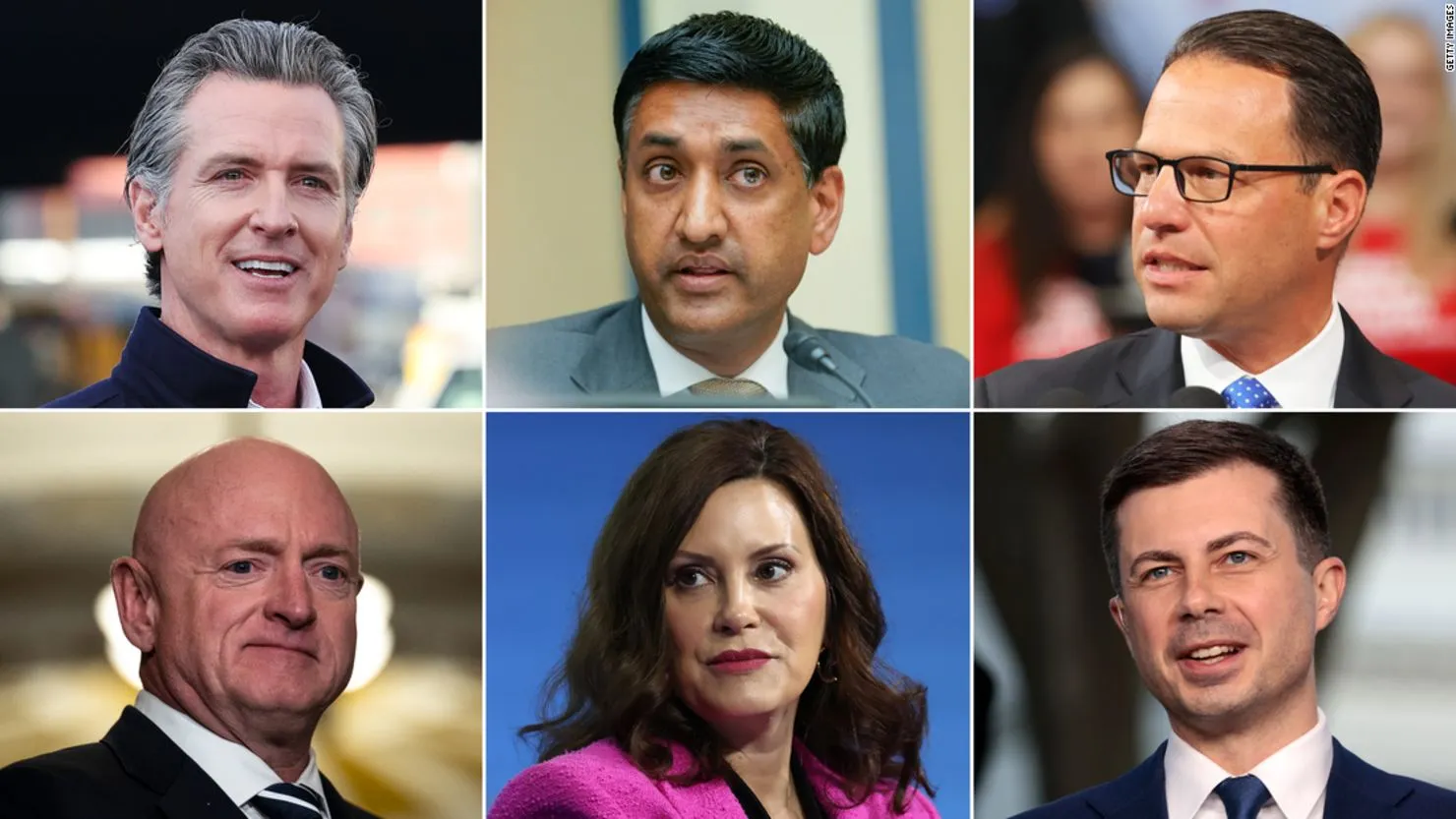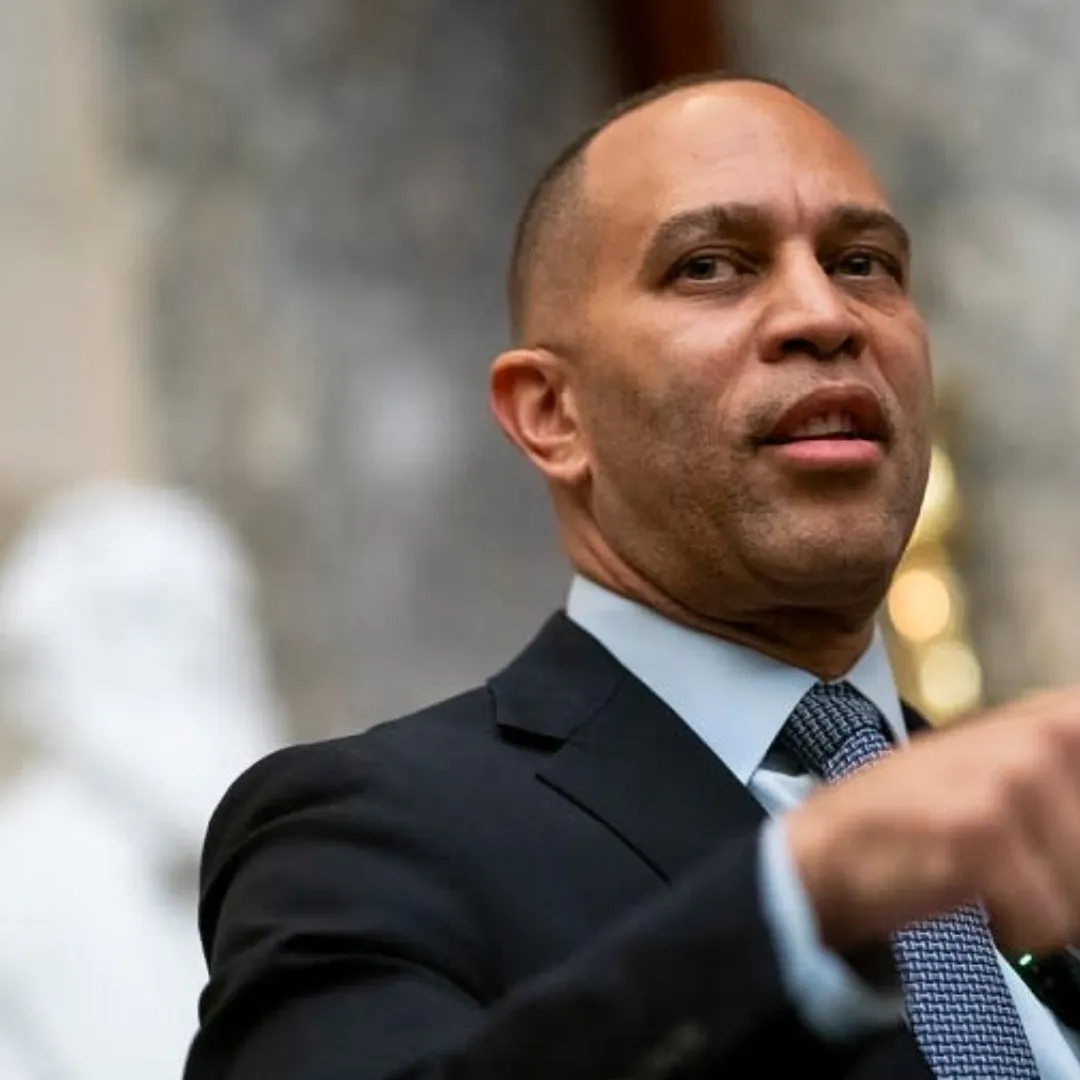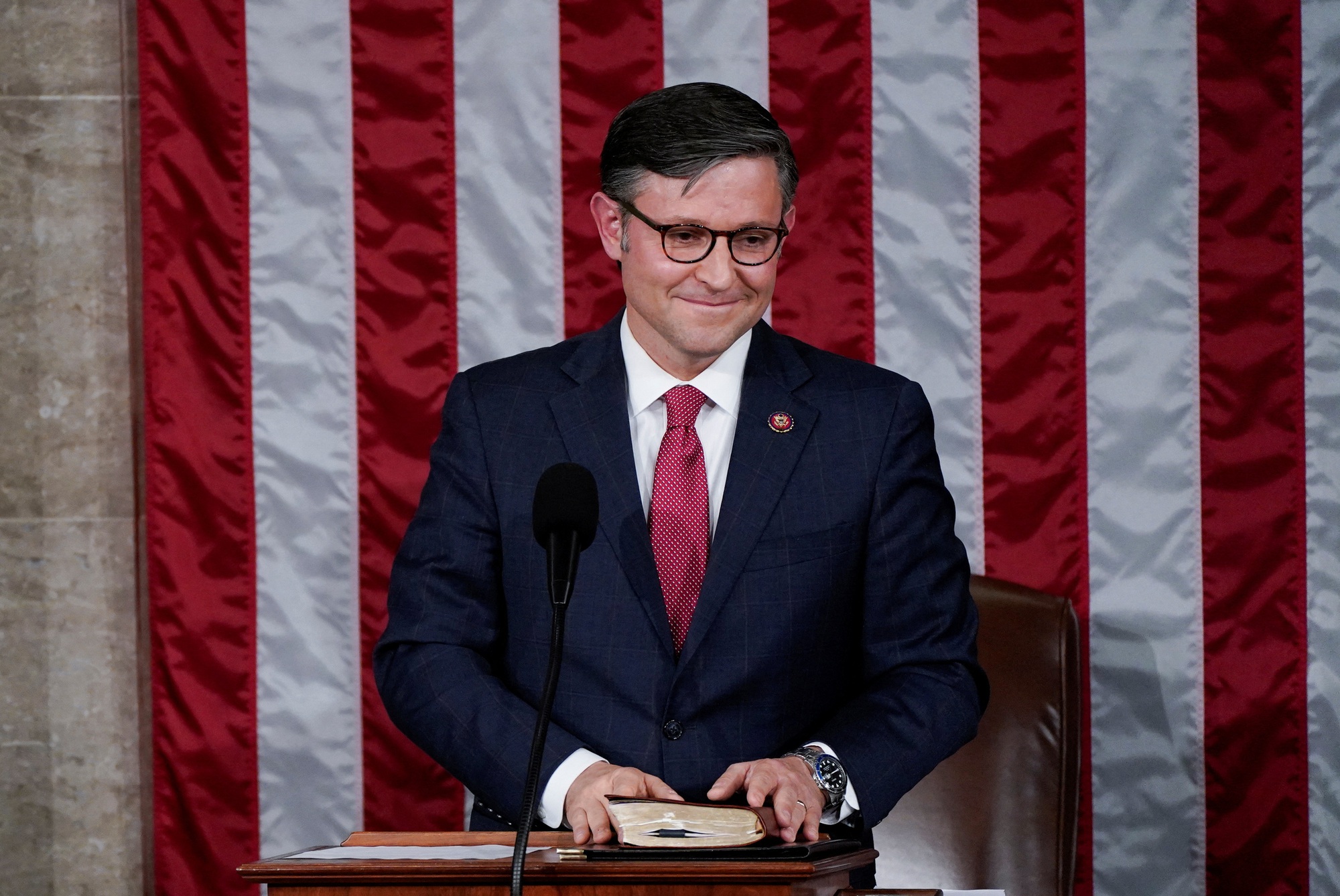
As Congress lurches through yet another budgetary showdown, House Speaker Mike Johnson finds himself walking a political tightrope — balancing the ambitions of former President Donald Trump, the demands of ultraconservative hardliners, and the fragile unity of a Republican Party still fractured by ideological differences.
This week, Johnson was forced to pull a scheduled vote on what Trump has described as a “big, beautiful” budget bill — a sweeping Republican framework packed with tax breaks, deep domestic spending cuts, and massive funding for immigration enforcement and defense.
Despite Trump’s personal intervention and pressure on lawmakers, internal resistance from within the GOP stalled the effort, leaving Johnson scrambling to secure enough votes.
The standoff has exposed deep divisions within the party, amplified questions about the sustainability of Trump-era economic promises, and triggered concerns about the broader direction of Republican fiscal policy.
At the heart of the conflict is a $7 trillion Republican budget blueprint that seeks to extend and expand the 2017 Trump tax cuts, inject billions into immigration enforcement, increase military spending, and offset these costs through more than $2 trillion in cuts to domestic programs.
The bill would also raise the federal debt ceiling by $4 trillion — though the Senate version of the budget sets that increase at $5 trillion — to give Congress breathing room through the 2026 midterm elections. The move is designed to prevent recurring fiscal crises, yet it comes as the national debt stands at $36 trillion and rising.
Trump’s imprint on the legislation is unmistakable. From tax relief on tipped wages and Social Security income to large-scale deportation plans, the bill is a roadmap for his 2024 campaign priorities.
But while Trump’s allies in Congress see it as a revival of “America First” economics, others view it as fiscally reckless and politically risky.
Wednesday’s failure to advance the package was a blow to Johnson, who presides over a deeply divided caucus with little room for error. With a razor-thin majority, he can afford to lose only a handful of votes.
Yet more than a dozen conservative Republicans, including members of the hardline House Freedom Caucus, stood firm against the plan. Their key objection: not enough spending cuts.
Several demanded reductions that go far beyond what the Senate had approved — some pushing for Medicaid slashes and elimination of certain social safety nets.
As tensions mounted, members of the Freedom Caucus took the unusual step of crossing the Capitol to meet privately with Senate GOP leadership, lobbying for a more aggressive fiscal approach.
Rep. Andy Harris (R-Md.), chair of the caucus, led the charge, urging coordination with Senate leaders like John Thune (R-S.D.). While Thune acknowledged the concerns, he rebuffed the idea of sending the bill back to the Senate for another round of voting.
“We can’t do that — another vote-a-rama that drags it on indefinitely,” Thune said.
As frustration mounted, Trump applied pressure from the sidelines. Speaking at a black-tie fundraiser earlier in the week, he scolded GOP lawmakers, telling them to “stop grandstanding” and “close your eyes and get there.”
Despite this, Johnson couldn’t muster the necessary support. After hastily convening a late-night meeting with dissenting Republicans, he emerged expressing optimism but offering no guarantees.
“We want everybody to have a high degree of comfort about what is happening here,” Johnson said. “We have a small subset of members who weren’t totally satisfied with the product as it stands.”
He confirmed speaking briefly with Trump, emphasizing the former president’s urgency. “The president is very anxious for us to get this done,” Johnson said.
One of the most contentious issues is how the budget is being calculated. The Senate version uses an accounting method that excludes the cost of extending the 2017 tax cuts — estimated at $4.5 trillion — from new spending projections. House conservatives argue this is financial sleight-of-hand.
Rep. Chip Roy (R-Texas) was blunt: “The math does not add up.”
Sen. Rand Paul (R-Ky.) echoed the sentiment, criticizing what he called “fishy math” that masks the bill’s true fiscal impact. Meanwhile, Sen. Susan Collins (R-Maine) opposed the House framework over its deep cuts to Medicaid.
Despite their concerns, Johnson has floated several alternatives, including amending the Senate bill or forming a conference committee to negotiate a compromise.
Democrats, while unable to block the bill outright, are voicing strong opposition. House Minority Leader Hakeem Jeffries (D-N.Y.) called the proposal “reckless and callous,” saying it prioritizes tax breaks for the wealthy over essential services for working Americans.
“We’re here to make it clear,” Jeffries said. “Hands off everyday Americans struggling to make ends meet.”
Democrats argue the bill would undermine health care, education, and social programs in exchange for corporate tax breaks and controversial immigration initiatives.
The budget debate also overlaps with escalating trade tensions, as Trump recently hiked tariffs on China to 125% and paused reciprocal tariffs for other nations. With global markets reacting sharply, the House quietly tucked in a procedural clause that would prevent the chamber from rejecting Trump’s tariff authority — a clear signal of alignment with the former president’s economic platform.
The political gamble is clear: Trump and his allies want a fiscal package that blends tax cuts, tough immigration policy, and nationalist trade measures into a single agenda.
But whether such a vision can unify Republicans, appease fiscal conservatives, and convince moderates remains a towering challenge.
The budget fight is far from over. House and Senate Republicans must reconcile their versions of the bill — no small feat given the deep ideological rifts. The timeline is also tight, with Treasury Secretary Janet Yellen warning that the government could run out of money by August if the debt ceiling is not addressed.
For Mike Johnson, the moment is critical. Having stepped into the speakership with minimal experience and a fractured caucus, his ability to navigate this test will shape not only his leadership but also the Republican Party’s credibility ahead of the 2024 elections.
Whether the “big, beautiful” bill ultimately becomes law — or collapses under the weight of its contradictions — remains to be seen. But one thing is certain: Republican unity is more aspirational than actual, and Trump’s economic legacy remains a live wire within the party he still dominates.



